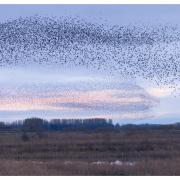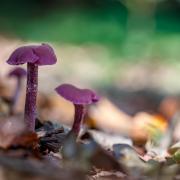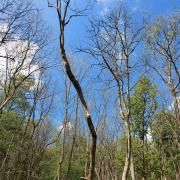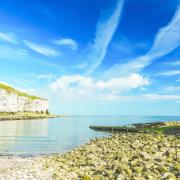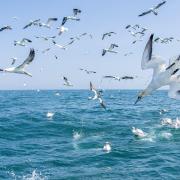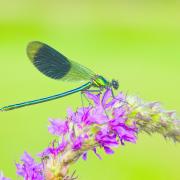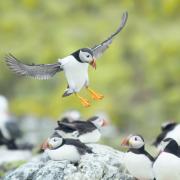The Tour de Yorkshire is back and bigger than ever. ‘Tour fever’ is at an all-time high, with a new stage and an extra day added for 2018. This Yorkshire-based race is the result of the success of 2014’s Tour de France (the first two stages were nicknamed Le Tour de Yorkshire), and we have embraced this local version with as much gusto as its French predecessor.

But even if you’re not a cycling nut, there’s lots of reasons get excited by this annual event. The Tour de Yorkshire takes in some of this region’s most wild and beautiful places, which provide home and habitat for some of our most treasured flora and fauna, so take the opportunity to enjoy a tour of an altogether different kind, using the race routes as your inspiration.
The race takes place over four stages and this makes a good framework for a meandering ride through the countryside – all you need to do is pick a stage and choose your pace.
Race designers have said this year’s route gives new meaning to the phrase “uphill and down dale”, so you may want to map out easier rides online. Go to mapmyride.com/gb/eng/ and you’ll discover thousands of different distances with different starting points. Similarly, ridetheroutes.co.uk was created so people could ride the routes of the 2015 and 2016 Tours safely, and comes complete with interactive maps, tips and info. You’ll also find advice in cycling groups on social media, so spend a little time researching and you’ll feel Tour confident.
Stage One of the Tour de Yorkshire is Beverley to Doncaster, taking in Hornsea, Cherry Burton, South Dalton, Pocklington, Holme on Spalding Moor, Howden and Rawcliffe. There are some lovely spots en route, including Yorkshire Wildlife Trust nature reserves like Allerthorpe Common and Denaby Ings, as well as Hornsea Mere on the picturesque estate of Wassand Hall.

Hornsea Mere is Yorkshire’s largest freshwater lake and you can take a break from your bike and wander through the glorious woodlands nearby. Keep an eye out for grass snakes on a springtime stroll and listen out for reed and sedge warblers near the lake. If you’re lucky you may even see migrating ospreys overhead.
Allerthorpe Common is not far from Pocklington and contains a surprising range of habitats for such a small lowland heath. In springtime, listen for the song of the woodlark and keep your eyes peeled for the May lily (a nationally rare type of lily), adders, green woodpeckers and willow warblers.
Denaby Ings is a wildlife haven with a fantastic mix of habitats. A much-needed oasis in a landscape scattered with farmland and housing developments, it’s close to Doncaster and bustling with life. Look out for kingfishers, goosander (a medium-sized duck) and orchids, as well as avocets, sand martins and grasshopper warblers.
Stage Two is from Barnsley to Ilkley and incorporates Penistone, Conisbrough, South Elmsall, Pontefract, Castleford, Kippax and Otley. This route is highly recommended in the springtime because of the spectacular wildflowers you will see as you tour about.

Dearne Valley Country Park is a wildlife haven less than a mile from Barnsley. Known for its willow tits, frogs, toad colony, great spotted woodpeckers and bluebells, this nature reserve brings wildlife into the heart of an urban centre. The River Dearne is one of the best places to see kingfishers year-round and it’s also a brilliant place for a picnic.
Brockadale is a joy to behold all year but in the spring the woodland floor is carpeted in wood anemones, bluebells, primroses, violets and early purple orchids – magic! During summer, its steep grassland slopes are alive with butterflies and you may see kingfishers here too. Home to buzzards, kestrels and even the occasional raven, this reserve is not far from Pontefract.
Between Leeds and Otley you’ll find Adel Dam, where you will be met by the mesmerising sight of masses of bluebells. You’ll also see marsh marigolds, as well as birds like kingfisher, blackcaps and chiffchaffs.
Stage Three is from Richmond to Scarborough and takes you through some of Yorkshire’s finest market towns – Leyburn, Bedale, Northallerton, Thirsk, Helmsley and Pickering – before the penultimate journey through Filey.

Once a working sand and gravel quarry, Bolton-On-Swale Lake is one of the few large areas of open water in this part of North Yorkshire and not far from Northallerton. Look out for birds like oystercatchers, common sandpipers, sand martins, yellow wagtails and sedge warblers.
Ashberry is one of the finest ancient woodlands in Yorkshire and is situated near Helmsley. Here you will find flowers like wood anemones, orange-tip butterflies (a sure sign of spring) and birds like blackcaps and chiffchaffs. Freshwater shrimps and white clawed crayfish can also be found in the crystal clear stream that flows through the reserve’s flower-rich limestone grassland and marshy valley.
Birch Wood is another ancient woodland close to Helmsley. Sitting within the North York Moors National Park, it faces across the picturesque valley towards the Hambleton Hills and boasts spectacular views. Primarily a mix of oak, birch and sycamore with a healthy under-storey of rowan, hazel, hawthorn, elder, ferns and more, wildlife is in absolute abundance here. The wood is home to deer, foxes, hedgehogs, grey squirrels and a variety of small mammals.
Filey Dams is the last remaining freshwater marsh of any size in the area. A magnet for migratory birds, it’s also a haven for plants, mammals like water voles and amphibians.
Stage Four of the 2018 Tour is from Halifax to Leeds and travels through Hebden Bridge, Haworth, Skipton, Burnsall, Kilnsey, Kettlewell, Middleham, Masham, Pateley Bridge and Otley. A couple of must-sees along the route include Ripon Loop and Hollinhurst Wood.
If you follow the Masham to Ripon bus route you’ll find Ripon Loop, a nature reserve within the River Ure. Here you may see rarities like thistle broomrape (a plant that only grows in Yorkshire) and otters. Bluebells and primroses can also be found in its lovely woodlands.
Hollinhurst Wood is especially fabulous in summer when it bursts forth with colour and scent as the meadow wildflowers come to full bloom. Not far from Leeds, this nature reserve would make the perfect finish line to your Tour de Wild.
We are lucky to live within easy reach of so much beauty in Yorkshire, so these itineraries are mere snapshots into the wonderful world you will discover on your wild journey. The most exciting part of any adventure is stumbling across places for yourself.
For more information, go to ywt.org.uk and letour.yorkshire.com/tour-de-yorkshire-2018.












